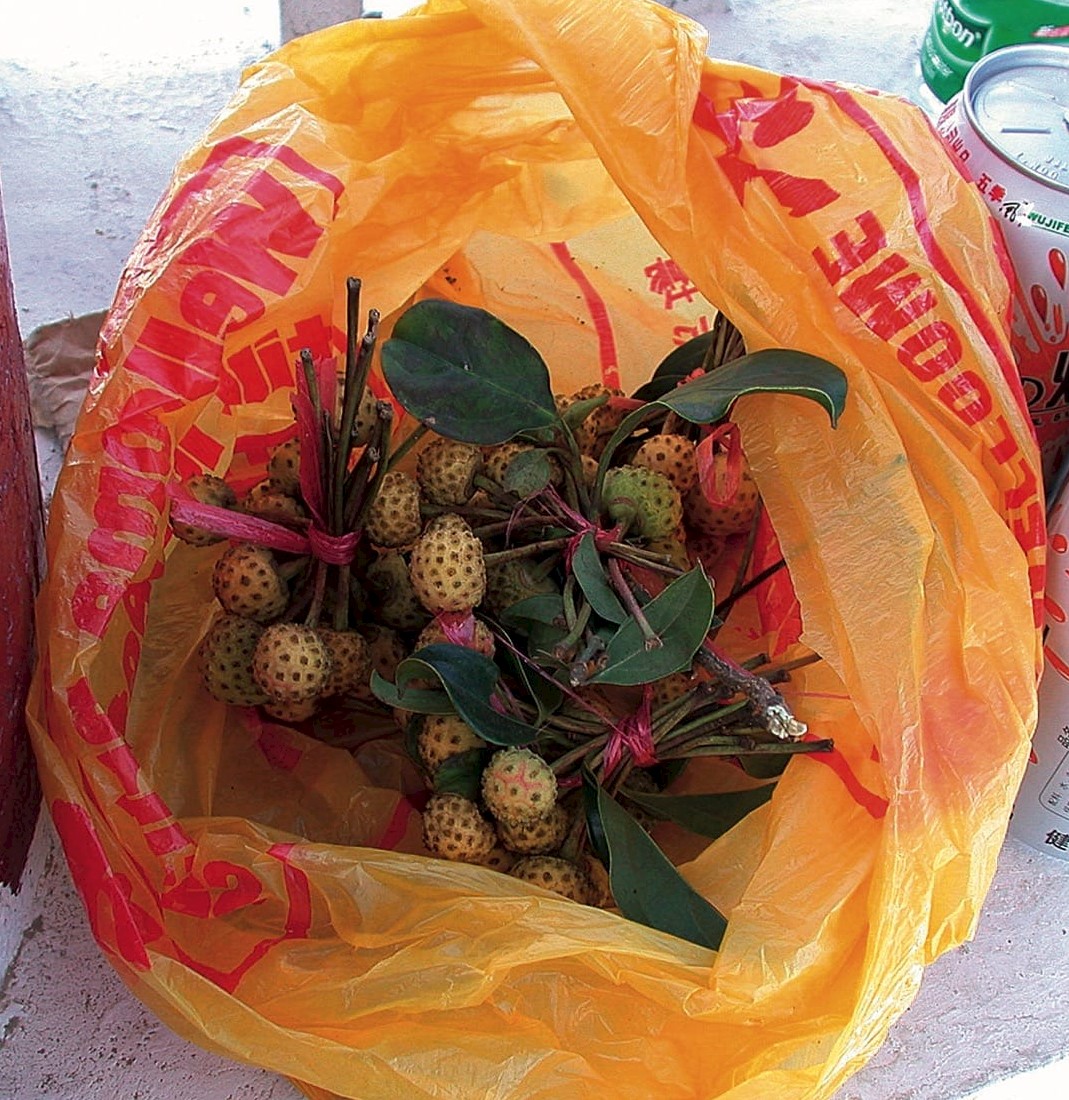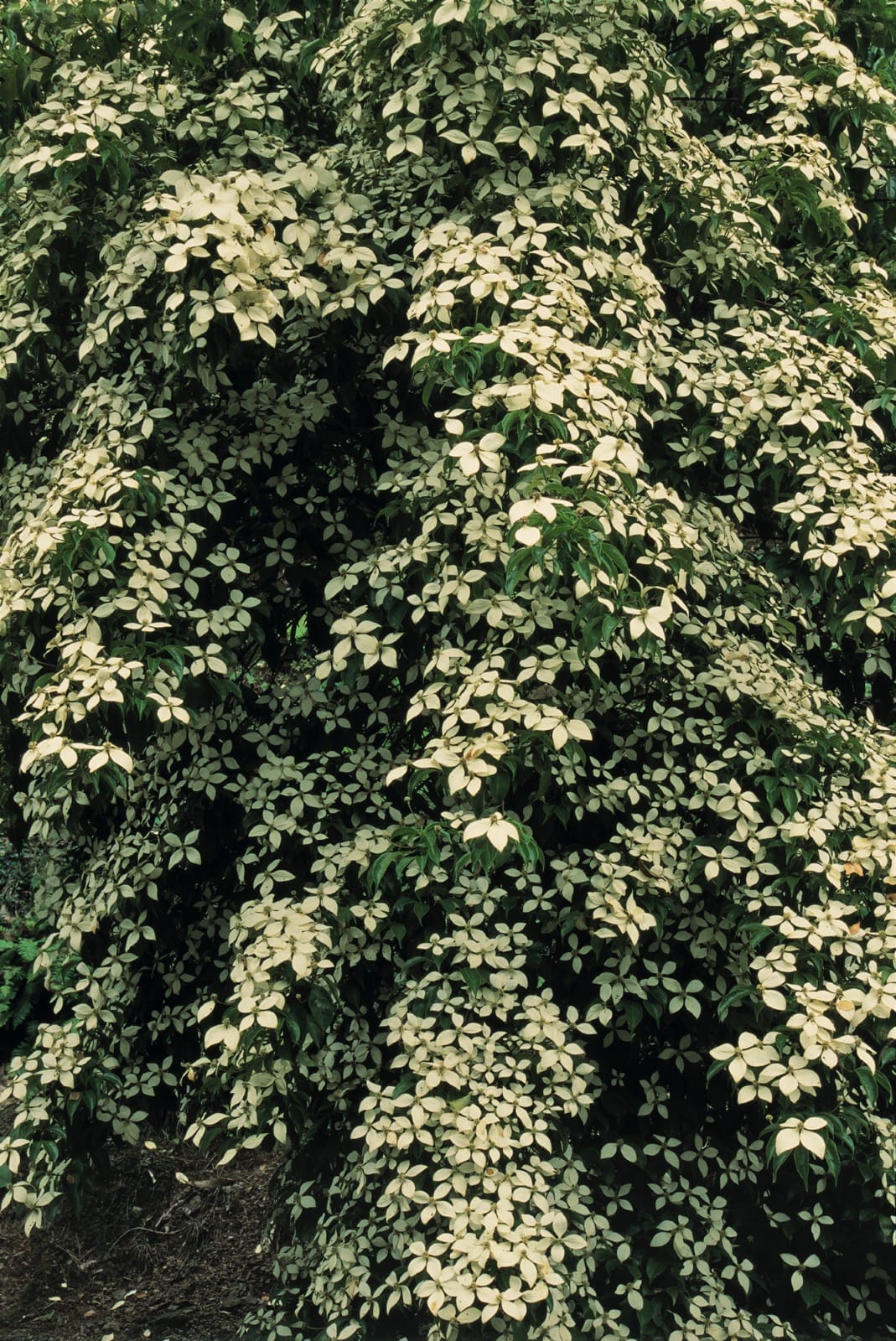Cornus hongkongensis
Credits
Article from New Trees by John Grimshaw & Ross Bayton
Recommended citation
'Cornus hongkongensis' from the website Trees and Shrubs Online (treesandshrubsonline.
Genus
Common Names
- Hong Kong Dogwood
Other taxa in genus
- Cornus alba
- Cornus alternifolia
- Cornus amomum
- Cornus asperifolia
- Cornus australis
- Cornus baileyi
- Cornus canadensis
- Cornus capitata
- Cornus chinensis
- Cornus controversa
- Cornus × dunbarii
- Cornus elliptica
- Cornus florida
- Cornus glabrata
- Cornus hemsleyi
- Cornus hessei
- Cornus × horseyi
- Cornus kousa
- Cornus macrophylla
- Cornus mas
- Cornus monbeigii
- Cornus nuttallii
- Cornus occidentalis
- Cornus paucinervis
- Cornus racemosa
- Cornus rugosa
- Cornus sanguinea
- Cornus schindleri
- Cornus sessilis
- Cornus stolonifera
- Cornus wilsoniana
Shrub or tree to 25 m. Bark smooth, grey or blackish brown. Branchlets green or purplish green with white or brown trichomes, rarely glabrous. Leaf buds with triangular-lanceolate scales, subtending floral buds; floral buds exposed and subtended by four small, green bracts. Leaves evergreen, 6.2–16 × 2.5–7.5 cm, leathery, shape variable, from oblong to elliptic, upper surface green, lower surface pale green and/or powdery, glabrous or with white or brown trichomes when young, sometimes tufts of trichomes in vein axils, three to four (to five) secondary veins on each side of the midvein, margins entire and slightly revolute, apex acuminate to caudate; petiole 0.8–1.2 cm long, covered in brown trichomes or glabrous. Inflorescence terminal, capitate cymes, 0.7–2 cm diameter, composed of 40–70 flowers; floral bracts yellowish or white, elliptic, ovate or orbicular, 1.6–4 × 1.3–2 cm. Flowers hermaphrodite, rather inconspicuous, with petals to 0.4 cm long. Fruits syncarpous, resultant berry globose, 1.5–2.5 cm diameter, red or yellowish red at maturity, sparsely covered in white trichomes and with multiple stones. Flowering April to June, fruiting October to December (China). Gardener 1979, 1980, Walden & Hu 1987, Xiang & Boufford 2005. Distribution CHINA: Fujian, Guangdong, Guangxi, Guizhou, Hunan, Jiangxi, Sichuan, Yunnan, Zhejiang; LAOS; VIETNAM. Habitat Broadleaved evergreen forest between 600 and 1800 m asl. USDA Hardiness Zone 8–9. Conservation status Not evaluated. Illustration NT262, NT263, NT268.
Six subspecies are recognised within this variable taxon, differing in details of pubescence and distribution. It is not entirely clear whether many of these are in cultivation, but Flora of China has a useful key, an adapted version of which is provided below.
| 1a. | Leaf blade obovate, 8.5–16 × 3.8–7.5 cm, thick and leathery; inflorescences (excluding bracts) 1.5–2 cm diameter; bracts broadly obovate or orbicular, 4–5 × 3–4.2 cm; China (western Guizhou, southern Sichuan, northeastern Yunnan), northern Vietnam | subsp. gigantea (Hand.-Mazz.) Q.Y. Xiang |
| 1b. | Leaf blade ovate to narrowly elliptic, 5.5–10(–13.5) × 2.7–5.8(–6.3) cm; inflorescences (excluding bracts) 0.7–1.3 cm diameter; bracts smaller and variously shaped | 2 |
| 2a. | Outer surface of petals glabrous or nearly so; style glabrous; China (southwestern Guangxi, southern Yunnan), northern Vietnam | subsp. tonkinensis (W.P. Fang) Q.Y. Xiang |
| 2b. | Outer surface of petals and style pubescent | 3 |
| 3a. | Lateral leaf veins inconspicuous; China (Fujian, Jiangxi, Zhejiang) | subsp. elegans (W.P. Fang & Y.T. Hsieh) Q.Y. Xiang |
| 3b. | Lateral leaf veins conspicuous | 4 |
| 4a. | Abaxial leaf surface and veins covered with dense reddish brown pubescence; China (Guangdong, Guangxi, Guizhou, Hunan, Jiangxi) | subsp. ferruginea (Y.C. Wu) Q.Y. Xiang |
| 4b. | Abaxial leaf surface sparsely covered with brown and/or white pubescence; veins nearly glabrous | 5 |
| 5a. | Leaves somewhat leathery, tufts of trichomes present in axils of veins on abaxial surface, though surface itself glabrous or with some brown trichomes; China (Guizhou, Hunan, Sichuan, Yunnan) | subsp. melanotricha (Pojark.) Q.Y. Xiang |
| 5b. | Leaves leathery or very leathery, with no tufts of trichomes in abaxial vein axils; abaxial surface sparsely pubescent with white and brown trichomes when young; mature leaves may be glabrous, but with conspicuous scars replacing hairs; China (Guangdong, Guangxi, Guizhou, Hunan), Laos, Vietnam | subsp. hongkongensis |
Plants labelled Cornus hongkongensis are found occasionally in botanical gardens and other collections throughout our area, but few have been identified to subspecific level. In the United Kingdom subsp. melanotricha has been confirmed in cultivation, with trees from a collection by Mikinori Ogisu (Ogisu 94322) made in Sichuan in 1994 growing both at Kew and at the Sir Harold Hillier Gardens. The specimen from which our line drawing was made (Figure 27, p. 262) is a thriving small tree of about 3 m tall at the Hillier Gardens, from which stems were collected in sweltering heat in July 2006, conditions more enjoyed by the plant than by the author. This specimen also appears to fit best within the concept of subsp. melanotricha, recognised by the small tufts of hairs in the vein axils on the otherwise almost totally glabrous leaf undersides. It was obtained by Roy Lancaster from the Shanghai Botanic Garden in 1987, as C. kousa var. angustata – demonstrating the confusion over the identities of this group. A very attractive feature is the bronzy young foliage (A. Coombes, pers. comm. 2007). Recent collections from northern Vietnam are now available from Crûg Farm nursery in the United Kingdom: HWJ 1033 is identified only as C. hongkongensis, and HWJ 1022 as aff. tonkinensis. Confirmation will be required as these plants come into flower, as both subsp. gigantea and subsp. tonkinensis are recorded from this area.
Hot summers seem to benefit the Hillier tree, which was flowering prolifically when observed in 2006, although it has yet to set fruit (A. Coombes, pers. comm. 2007). (In 2007 it flowered even more prolifically, with larger bracts, due to the abundant moisture that year.) Hogan (2008) also suggests that C. hongkongensis will be particularly useful in hot climates. The ‘flowers’ are not large by comparison with other species, but they look well over the dark evergreen foliage and the species is much more than just a botanical curiosity, deserving cultivation in suitable sites.
The name Cornus capitata subsp. emeiensis (W.P. Fang & Y.T. Hsieh) Q.Y. Xiang, derived from Emei Shan, is not recognised by Flora of China, but in horticulture emeiensis appears in a diversity of orthographic variants (for example, omeiense) and taxonomic combinations in connection with a number of evergreen dogwoods – particularly in North America but increasingly in Europe as well. In North America, ‘C. omeiense’ became known through the release in 1990 by Piroche Plants of a seed-raised batch of plants named ‘Summer Passion’. It is important to note that these were not a uniform cultivar (although still sold as such by Piroche) and that there is considerable variation between so-named specimens (Hogan 2008). The situation is further confused in that there is a suggestion that these are intermediates between C. capitata and C. elliptica (Wharton et al. 2005). However, these plants tend to have characteristics that identify them with C. hongkongensis rather than C. capitata or C. elliptica, notably the glossy upper surfaces of the leaves and the more or less glabrous, smooth-feeling lower leaf surfaces. Without examining material from a wide range of trees it is impossible to assert that all trees in cultivation as C. emeiensis or ‘Summer Passion’ are indeed C. hongkongensis, and if so, identify the subspecies to which they belong: readers should investigate for themselves. Whatever the true affinities of these trees in cultivation, however, they are usually very attractive, with dark glossy leaves that flush red, and abundant flowers. They seem to be hardy in much of southern England, western North America and the milder areas of the East Coast. One small specimen was seen flowering prolifically at the JC Raulston Arboretum in May 2006.


